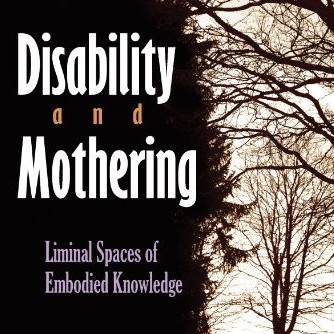October 10, 2012
An Annotated Bibliography of Literature on the Rhetoric of Health and Medicine
1973-1995
- Foucault, Michael. The Birth of the Clinic: An Archaeology of Medical Perception. Trans. M.S. Smith. London: Routledge, 1973. Print. In this piece, one of the earliest works in what is now considered postmodern cultural studies, Foucault reviews a vast span of French history. He reconstructs the birth of the clinic, paying careful attention to the ways that particular socio-political events transformed medical, scientific, and clinical discourse, and in turn, the way that knowledge and subjects were constructed. One key turning point took place after the French Revolutions when hospital clinics ceased to be a sampling area for medical students to examine well-known diseases; instead, they became the primary site of treatment (60). During the same time, there was a change in what Foucault calls the “medical syntax”; discourse changed from a “mixed syntax,” one that valued languages as an inventive and arranging component of knowledge (62), to the “modernist syntax” (107). In the “modernist syntax,” the Gaze, and the Gaze alone, was responsible to perceive, recognize, and rationally identify the cause of the symptoms they saw (107). Language, after this transition, was seen only as a transparent means of describing the perceived; any noise that interfered with the gaze of the physician was a threat to pure knowledge—including rhetoric (109-114). The body of the patient, therefore, became an object of the gaze, and the perceptive physician, the dominant subject.
Doctoring, History, Pedagogy - Smith, Barbara. “Black Lung: The Social Production of a Disease.” International Journal of Health Services 11 (1981): 343-359. Print. Barbara Smith was one of the earliest scholars to object to the way that socio-political policy impacted the definition of disease and the unjust delivery of patient treatment. In her article, Smith describes a conflict between mine workers who want to be diagnosed and compensated for black-lung disease according to their level of suffering, and doctors and corporations who wanted to define the disease based on an “objective” x-ray image of patients’ lungs. In one case, compensation was based on pragmatic need while the other used positivist rhetoric to justify limiting compensation. This conflict contributed to the 1968 Miners Strike. Smith argues that policy makers cannot address questions of health and disease without also addressing the socio-economic structures which produce and reinforce them. According to Mol and Berg (1998), this article was not well received or subsequently cited, largely due to the strained political views regarding Marxism and critical social theory at the time of its publication. However, since the 1980s, these types of studies have become more prevalent and more valued within the healthcare and policy systems for their ability to identify the need for change.
Policy - Anderson, Charles. Richard Selzer and the Rhetoric of Surgery. Carbondale: Southern Illinois UP, 1989. Print. Anderson’s work illustrates the strong and rich relationship that has always existed between rhetoric, medicine, and magic. His book considers surgeon and author Richard Selzer’s literary work, which deals mainly with his experiences as a physician. Anderson focuses on the “convergence of historical presence, artistic perception, and factual constraint” in Selzer’s writing that poetically weaves together strands of discourse usually segregated in the modernist mindset (xvi). Anderson also displays this capacity in his own analysis. As much concerned with the philosophy of writing as it is with rhetoric, the study is a beautiful model of how literary, composition, rhetorical, and historical scholarship can operate as a harmonious, theoretical whole.
Doctoring, Narrative - Condit, Celeste. Decoding Abortion Rhetoric: Communicating Social Change. Urbana: University of Illinois P, 1990. Print. In this book, Condit, a speech professor, takes a neutral stance to analyze the history of abortion discourse through a rhetorical lens. She begins in the 1950s, considering rhetorical devices physicians used to petition for a change in abortion laws. She argues that in Roe v. Wade the ruling centered on competing narratives about women and their identities. Because the ruling depended upon the new characterization of women, which expanded their control of choices and not upon the definition of “life” directly, the court decision has left open to the public debate the fetus’s right to life. Condit traces the expansion of the conversation, rhetorically analyzing a variety of media including pamphlets, billboards, slogans, television and magazine advertisements, as well as narrative tropes that have defined either side of the debate. Condit observes that polarized or “over-weigh[ted]” rhetorics have brought discursive closure between activists, leaving the majority of the public in the middle with mixed views about the subject. Condit also suggests, with well-documented textual support, that the pro-choice movement has not found a strong enough ground, rhetorically, from which to make its appeals.
Public Discourse - Montgomery Hunter, Kathryn. Doctors’ Stories: The Narrative Structure of Medical Knowledge. Princeton: Princeton UP, 1991. Print. A Literature PhD and medical humanities professor, Montgomery Hunter explains to medical students and doctors that their knowledge practice is not innately scientific–rather, it is narrative. Their daily information gathering and decision making is structured not on empirically controlled experiments, but on narratives, both of patients and of health care professionals: “treatment is undertaken in light of principles of biological science. Yet medicine’s focus on the individual patient, fitting general principles to the particular case, means that the knowledge possessed by clinicians is narratively constructed and transmitted. How else can the individual be known?” (xvii). This process takes place in the taking of patient history, in case charts and reports, in anecdotal conversation between doctors, and in doctors’ communication with patients, no matter how at times incommensurable their two forms of narrative may seem. Montgomery Hunter gently reminds doctors that the meaning of a patient’s illness is not the meaning of the patient’s life and encourages doctors to remember the shared narrative we all posses, which moves from life to death with or without a biological story to explain it (158).
Doctoring, HCP-Patient Com, Narrative - Schryer, Catherine F. “The Lab vs. the Clinic: Sites of Competing Genres.” Genre and the New Rhetoric. Ed. Aviva Freedman and Peter Medway. London: Taylor and Francis, 1994. 105-24. Print. Schryer presents qualitative research findings from a curriculum consultation she conducted for a veterinary medical school. Through extensive participant observations, interviews, and textual analysis, she found that, beyond learning professional genres as a pragmatic form of communication, the IMRDS (Introduction, Methods, Results, Discussion, Summary) and record keeping genres of medical writing socialized the students into either theoretical science or practicing clinician discourse communities. Additionally, these communities are a part of a power hierarchy in which theory is valued over practice. She suggests curriculum designers find ways to cross the literacies more purposefully so that students would appreciate the values and practices of each discourse community; however, she notes that this would be difficult in a culture where these patterns have been engrained for so many centuries.
Genre, Medical Research, Pedagogy - Davis, Lennard J. Enforcing Normalcy: Disability, Deafness, and the Body. New York: Verso, 1995. Print. Although not a founding scholar in disabilities studies, Davis is a distinguished pillar in the field. He argues that cultural studies scholars and theorists, including those in English, have marginalized disabilities studies amidst their very cries for inclusion. In this book, his earliest on the topic, Davis calls disability “the missing term in the race, class, gender triad” and makes a moving argument for why, like other minority categories, disability is in need of theoretical attention and empowerment (1). Deafness presents itself as a useful case study for its rich history in both Europe and America and because deaf culture today largely rejects the normalizing rhetoric and ideological values that view deafness as a disability. Davis went on to edit the now essential Disability Studies Reader, first published in 1997, and now in its third, 2010 edition (annotated below). Besides his position as an English professor at the University of Illinois at Chicago, Davis is now a Professor of Medical Education at the University of Illinois College of Medicine and Professor of Disability and Human Development in the School of Applied Health Sciences.
Disabilities Studies, Public Discourse - Frank, Arthur W. The Wounded Story Teller: Body, Illness, and Ethics. Chicago: U of Chicago P, 1995. Print. Most consider Arthur Frank to be a key founder of narrative medicine as we know it today. While several have considered doctors’ stories and narrative identities, Frank was one of the earliest scholars to investigate the way patients make sense of their pain through a “pedagogy of suffering” and the meaning-making practices of narrative. Frank presents the illness narratives of those with maladies such as ovarian cancer, chronic fatigue syndrome, and disabilities in order to identify patterns in the values and meanings the patients construct for themselves. He identifies three types of stories: the restitution story, which aims to return to a past state of well-being; the chaos story, which finds no purpose or pattern in the ongoing experience of pain; and the quest story, which seeks insight and personal transformation through the experience of suffering. Narrative medicine deals with questions of subjectivity, which requires the storyteller to balance an awareness of her limited perspective with an assurance of the value and authenticity of her personal knowledge and experience. What emerges from these attempts are a postmodern ethic that inscribes dignity on the sufferer and on those who listen to their narratives.
Narrative, Public Discourse - Reynolds, Fred, David Mair, and Pamela Fischer. Writing and Reading Mental Health Records: Issues and Analysis in Professional Writing and Scientific Rhetoric. 2nd ed. Mahwah, NJ: Lawrence Erlbaum, 1995. Print. Written by two rhetoric and composition scholars in collaboration with a psychologist, this book is meant to guide clinicians into a greater awareness of their choices regarding the rhetorical construction and meaning of their patient records. The book also seeks to draw attention to the highly fluid, rhetorical role of medical records within the healthcare system and the power they have to shape patient care, effectively or ineffectively: “Psychiatrists, psychologists, social workers, nurses, therapists, counselors; lawyers, judges, caseworkers, parole boards, probation officers; classroom teachers, school psychologists, guidance counselors . . . all need the fullest possible awareness of the complexities and political realities of rhetorical situations(s)” (xii). Chapter 1 reviews the literature on mental health records to date. Chapter 2 provides a taxonomy of mental health records. Chapter 3 considers ideological biases effecting the composition of records. Chapter 4 unpacks the Diagnostics and Statistical Manual of Mental Disorders (DSM) and the language system it constructs. Chapter 5 presents the results of a survey investigating clinician’s opinions about health records (first published in TCQ in 1989). Chapter 6 provides pedagogical and applied strategies for improving records, as well as suggestions for future research. Finally, chapter 7 considers developments that took place between the 1992 and 1994 edition of the text.
Doctoring, Genre, Policy




 Jessica Masri Eberhard is a PhD student in Rhetoric and Composition at the University of South Florida. Specializing in the Rhetoric of Medicine, her research investigates clinical ethics through actor network theory. She teaches composition and works at her university writing center while conducting ethnographic research at a nearby teaching hospital.
Jessica Masri Eberhard is a PhD student in Rhetoric and Composition at the University of South Florida. Specializing in the Rhetoric of Medicine, her research investigates clinical ethics through actor network theory. She teaches composition and works at her university writing center while conducting ethnographic research at a nearby teaching hospital.